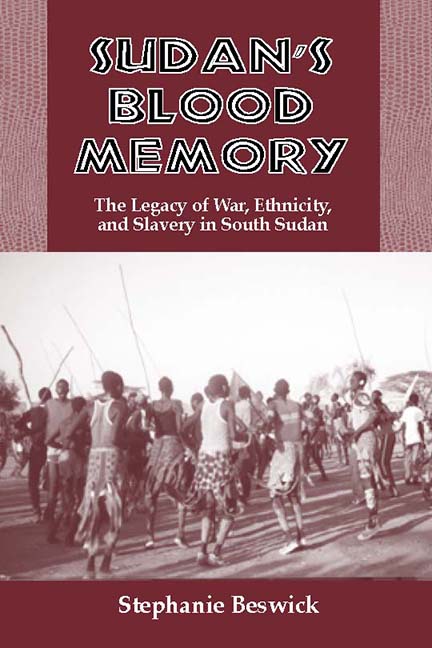Book contents
- Frontmatter
- Dedication
- Contents
- Maps
- Preface
- Acknowledgments
- A Note on Orthography and Languages
- A Note on Sources
- Map
- 1 Introduction
- 2 Geography and Brief History of Sudan
- 3 The Changing Nilotic Frontier
- The Ethno-Historical Formation of Southern Sudan
- The Ascendancy of the Dinka in Southern Sudan
- Foreign Intrusion and Its Consequences
- Notes
- Glossary
- Bibliography
- Index
2 - Geography and Brief History of Sudan
Published online by Cambridge University Press: 23 July 2019
- Frontmatter
- Dedication
- Contents
- Maps
- Preface
- Acknowledgments
- A Note on Orthography and Languages
- A Note on Sources
- Map
- 1 Introduction
- 2 Geography and Brief History of Sudan
- 3 The Changing Nilotic Frontier
- The Ethno-Historical Formation of Southern Sudan
- The Ascendancy of the Dinka in Southern Sudan
- Foreign Intrusion and Its Consequences
- Notes
- Glossary
- Bibliography
- Index
Summary
The geography and climate of Sudan have had a profound effect on its history. Indeed, the migrations of many peoples have often been pegged to weather patterns and types and quality of soils. Additionally, the availability of water resources has also been an important factor in dictating the movements of peoples throughout Sudan's history.
Today, the modern nation of Sudan is the largest country in Africa; it is just over one quarter the size of the United States and the population in 2000 was estimated to be thirty million. The northern states cover much of the Sudan and include most of the urban centers. Most of the twenty-two million Sudanese who live in this region are Arabic-speaking Muslims, though the majority also use non-Arabic mother tongues (such as Nubian, Beja, Fur, Nuban, Ingessana, etc). The southern region has a population of approximately eight million who practice a predominantly rural subsistence economy. The lingua franca is English and there are numerous indigenous languages.
Geographically, Sudan lies immediately south of Egypt and extends over a distance of fourteen hundred miles from north to south and twelve hundred miles from east to west, comprising approximately one million square miles. It borders Libya and Egypt in the north, Eritrea, Ethiopia, Kenya, and Uganda in the east, the Democratic Republic of the Congo in the south, and the Central African Republic and Chad in the west.
Topographically the terrain of Sudan is generally flat, consisting of a featureless plain, with mountains in the north and west. Its lowest point is on the Red Sea; its highest is at Mount Kinyeti in the south, which rises to 10,456 feet (3,187 meters). Its greatest natural hazards are dust storms.
Sudan can be geographically divided into three regions. The first is the desert north of latitude nineteen degrees north. The rain fall is infrequent due to the prevailing of the dry northerly winds throughout the year. The second region is the typical tropical continental climate south of latitude nineteen degrees north, which is dominated by the movement of the inter-tropical convergence between the dry northerly and moist southern winds. The rain fall ranges from less than one hundred millimeters in the desert to fifteen hundred millimeters in the high-rainfall Savannah and mountain rain-forests of the subtropics in South Sudan.
- Type
- Chapter
- Information
- Sudan's Blood Memory , pp. 9 - 14Publisher: Boydell & BrewerPrint publication year: 2004



